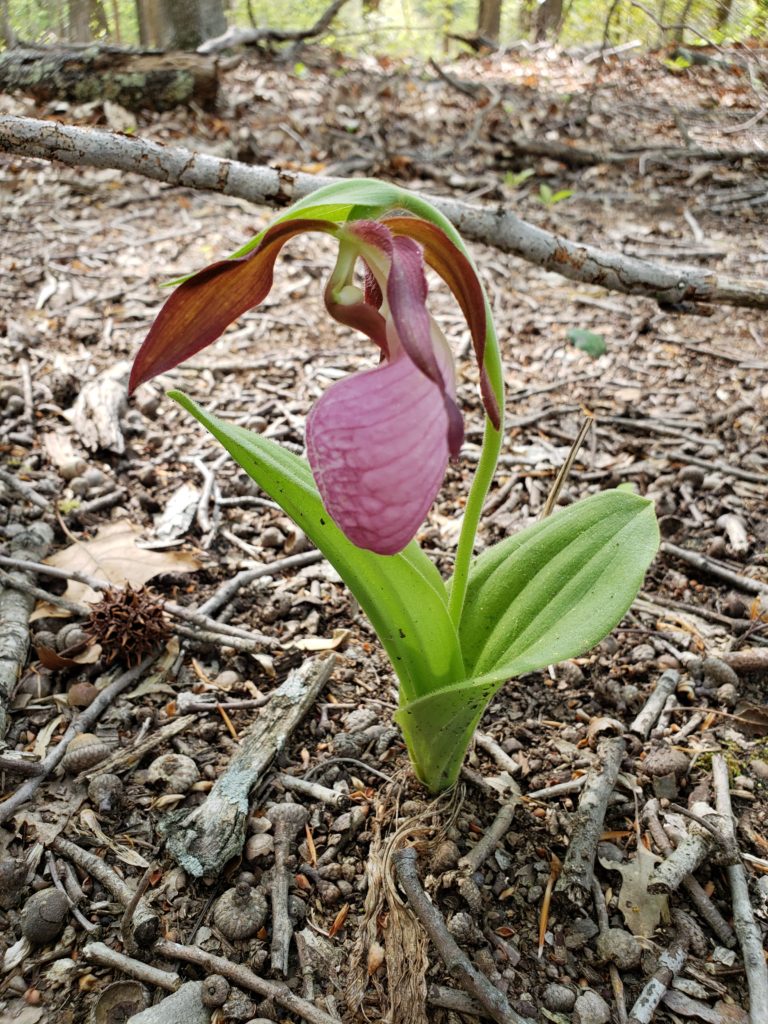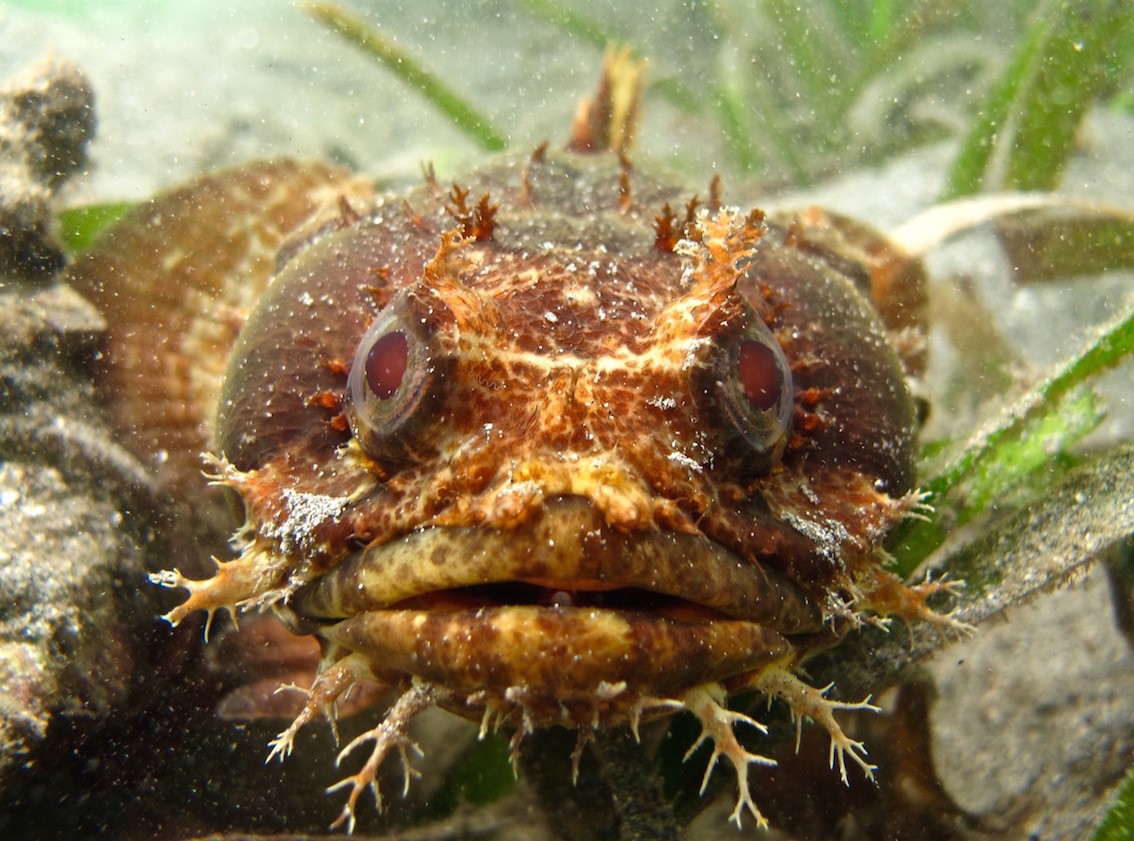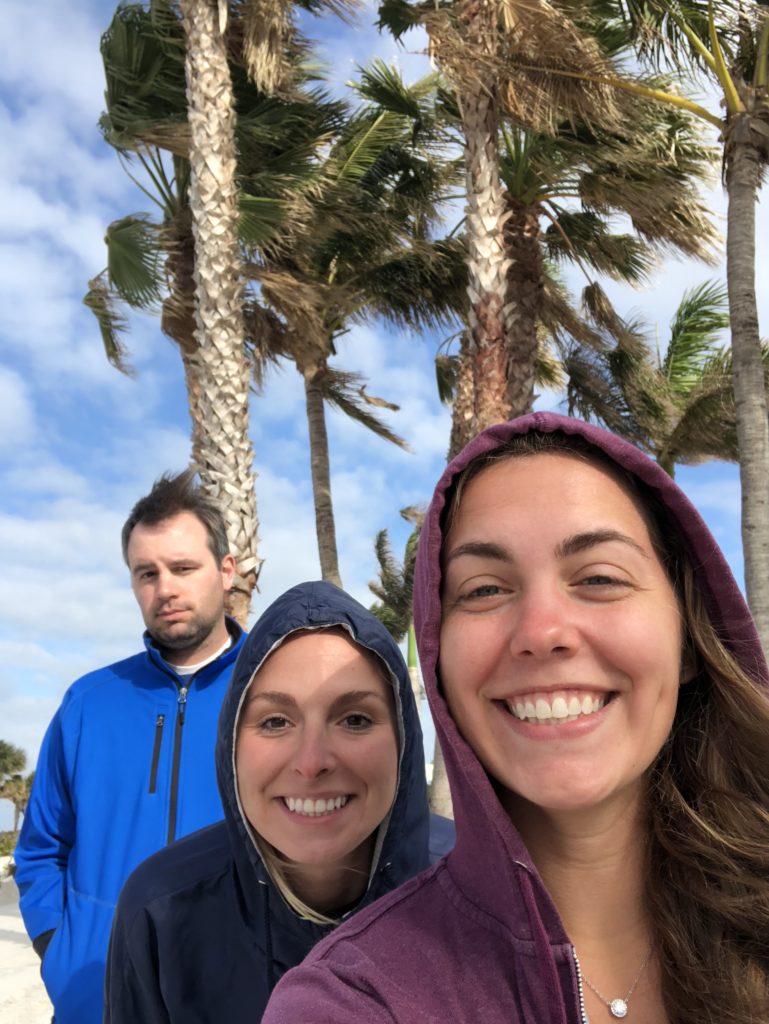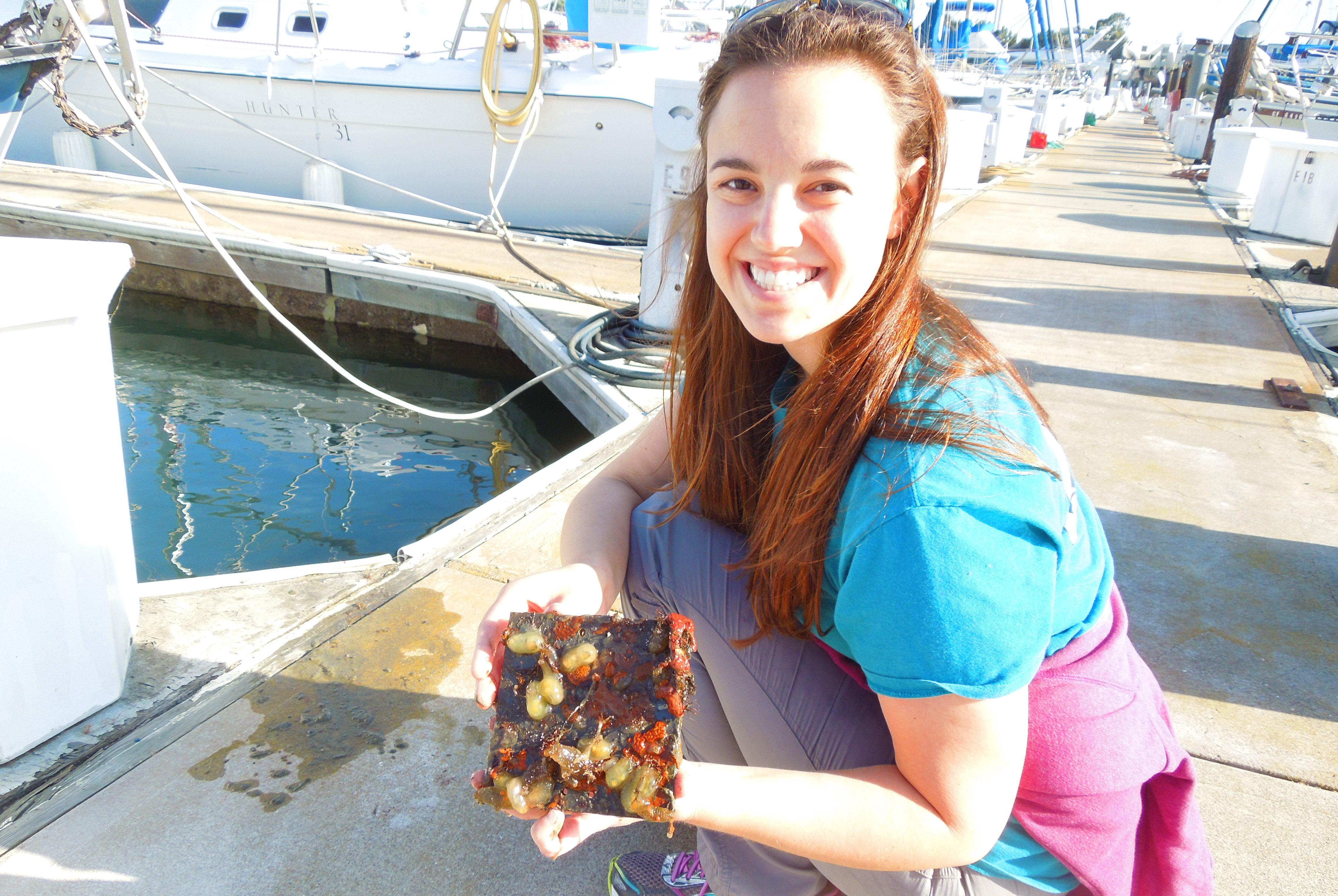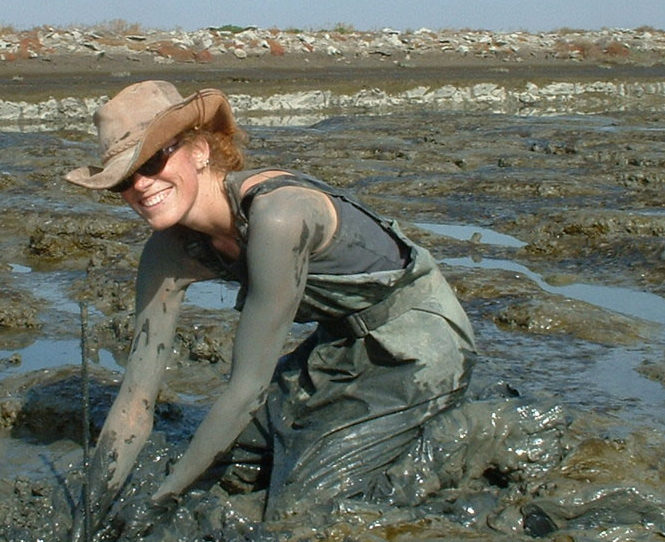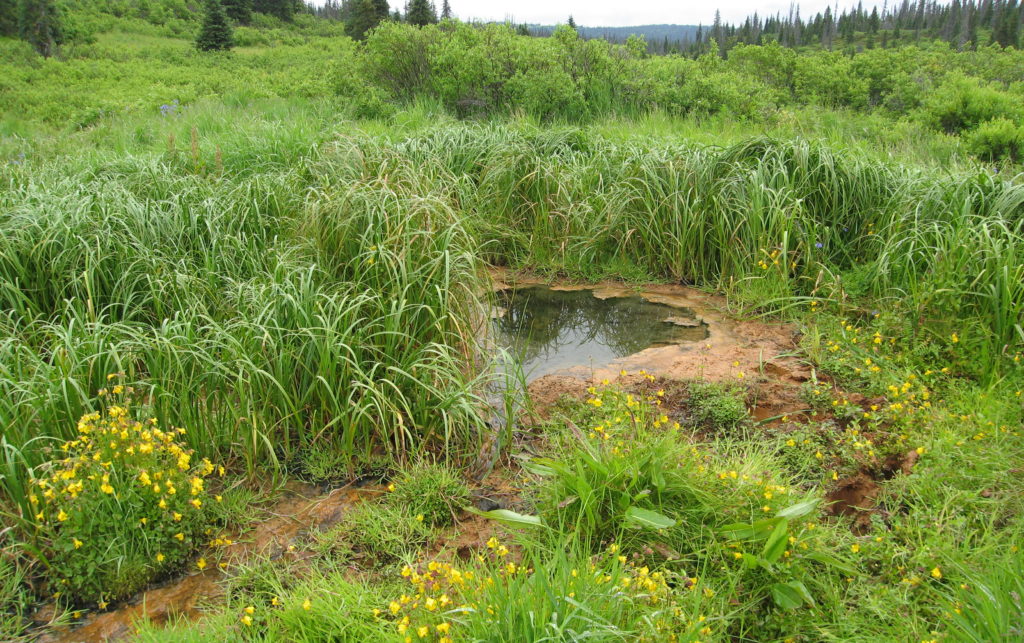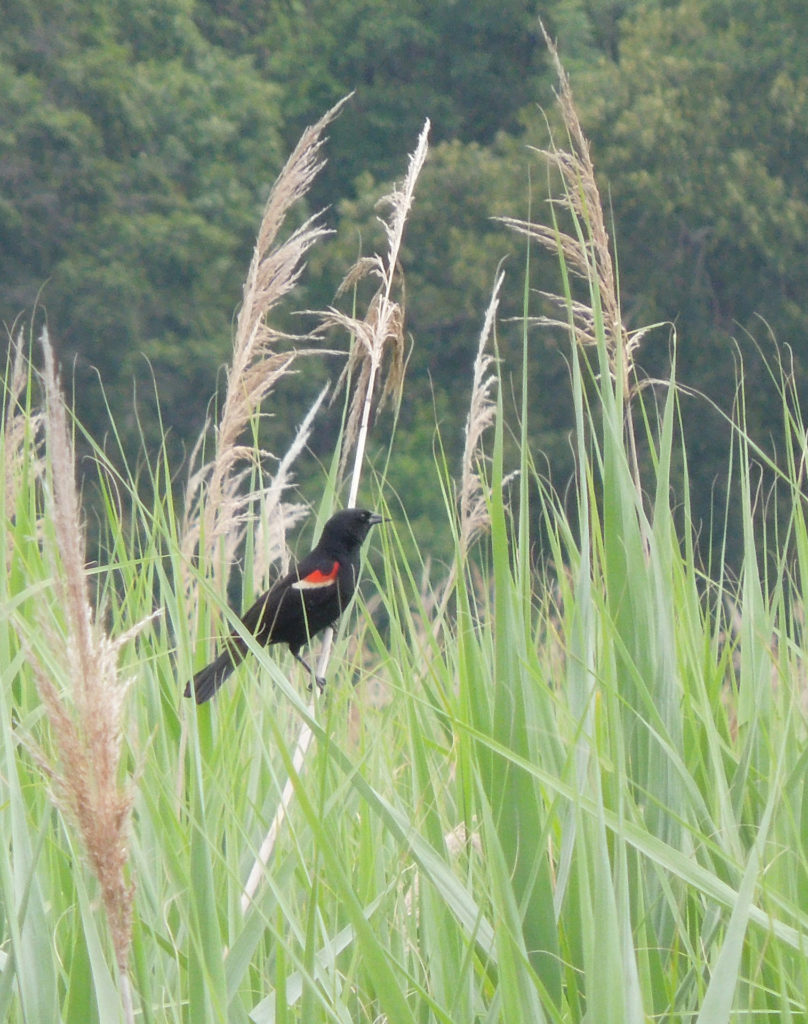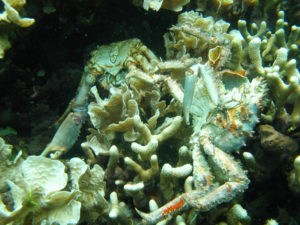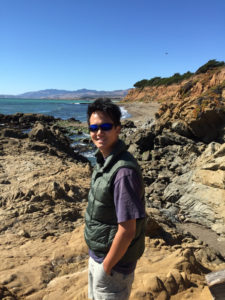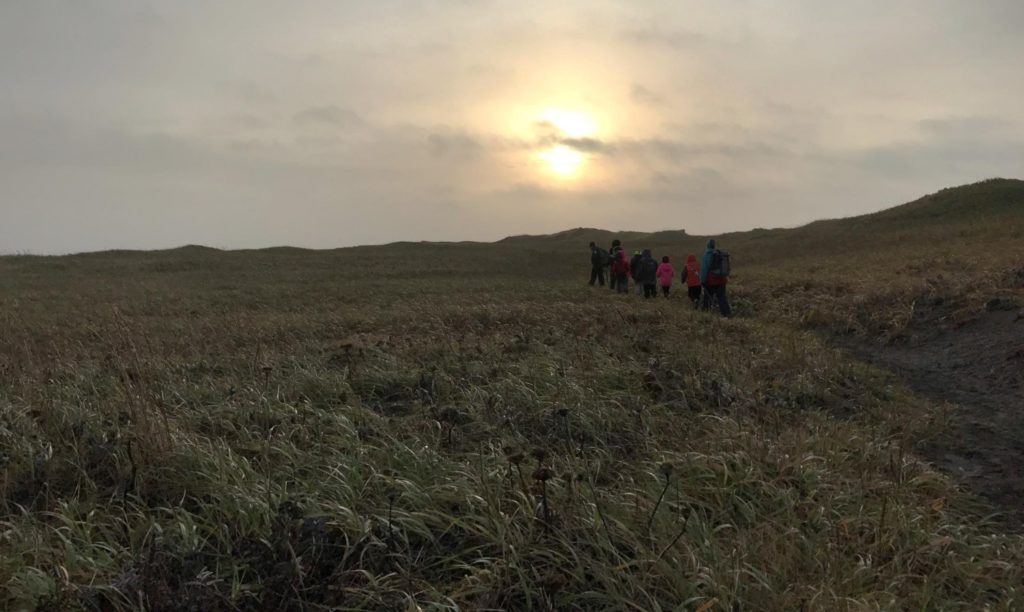Biologists discover endangered Isthmian goby and other elusive fish thriving around dock pilings
by Kristen Minogue
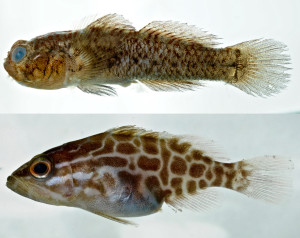
Top: Endangered Isthmian goby (Gobiosoma spilotum) found beneath a dock of Bocas del Toro, Panama. Bottom: Threatened black grouper (Mycoptera bonaci) found beneath a Belize dock. Photos: Simon Brandl & Jordan Casey/Smithsonian
The Panama Canal is home to one of the rarest fish in the world: the Isthmian goby, an endangered, brown-speckled fish less than 3 centimeters long. For years scientists thought it remained only at the locks of the canal’s Caribbean entrance, until a team of Smithsonian biologists found one nearly 200 miles away in a place no one expected.
Isthmian gobies (Gobiosoma spilotum) thrive in shallow waters like tropical tidepools. The expansion of the Panama Canal, along with other coastal development, has eaten up much of their habitat. So scientists were shocked to find the goby circling another manmade structure, a dock off the Panamanian island of Bocas del Toro. The team, from the Smithsonian Environmental Research Center (SERC) and the National Museum of Natural History, reported their discovery in a new study in the journal Ecology and Evolution.
“I didn’t even know what it was at first,” said Simon Brandl, the study’s lead author and SERC biologist. Though he knew it was a goby of some kind, he was unable to pinpoint the species. So Brandl sent the mystery photo to scientists at the Smithsonian’s National Museum of Natural History and the American Museum of Natural History. “They were like, holy cow, this is Gobiosoma spilotum.” Click to continue »
